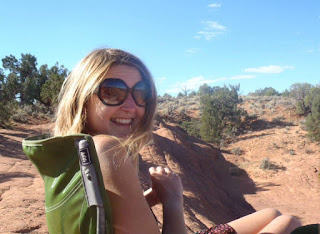Listen to Episode 20
HERE...
In the first part of our show this week we explored the protection of areas on the Plateau that are sacred to the many sovereign Nations that have called this region home since the very beginning.
At Zuni Salt Lake for instance, sacred area to the Zuni, Acoma, Laguna, Hopi and Taos pueblos. There are annual pilgrimages to Zuñi Salt Lake to harvest salt, for both culinary and ceremonial purposes. Ancient roadways radiate out from the lake to the various pueblos and ancestral pueblo sites, such as Chaco. The lake itself is home to the Salt Mother deity, known to the Zuñi as Ma'l Okyattsik'i. When the coal industry came around, a grassroots effort from the pueblos and environmental groups helped to stop the water table from being pumped out of the unique and precious area.
 |
| Zuni Salt Lake on the southern edge of the Plateau (AirPhoto) |
At the Confluence of the Little Colorado and Colorado Rivers a massive tourist area dubbed Grand Canyon Escalade threatened to go in to an area considered extremely sacred to all tribes who have connections to the Grand Canyon as either an emergence place or a place of historic and modern importance. A group called Save the Confluence and many local people helped to stop this from happening.
 |
| The Little Colorado on its journey to the Grand Canyon (OARS) |
And the decades long fight to prevent a ski area on the San Francisco Peaks from expanding and then later from using treated sewage water to make artificial snow is still being fought in the courts, primarily by the Hopi Nation but backed many other people and tribes who consider this mountain to be extremely sacred.
We also were extremely honored to talk to Jim Enote from Zuni, the CEO of the
Colorado Plateau Foundation.
 |
Jim Enote, farmer, fisherman, and so much more...
Still taken from the film Counter-Mapping by
Adam Loften & Emmanuel Vaughan-Lee) |
Jim is responsible for helping to create the efforts surrounding the ideas of counter-mapping, a revisionist effort to elaborate Zuni history and cultural survival independent from the non-Zuni narrative, using Zuni language and Zuni aesthetics and sensibilities as they artistically map their region. We discussed Jim's history, his family, farming, building homes and the difference between trying to converge Native knowledge with science, and keeping them separate while having respect for both. It was one of the best conversations we ever had on the air, and hopefully paved the way to future shows with Jim whenever he is in town again.
To see a great video in regards to counter-mapping with Jim, head over to
Emergence Magazine and prepare to be extremely moved.
And if you are interested in supporting the wonderful efforts of the Colorado Plateau Foundation as they strive to help protect sacred and endangered lands, water, language, and sustainable community based agriculture, or are a Native-led group looking to apply for a grant, head over to their
website to learn more.
And stay tuned for future news in regards to a new PBS Series titled
Native America that will feature Jim and will be airing this Fall.


















































